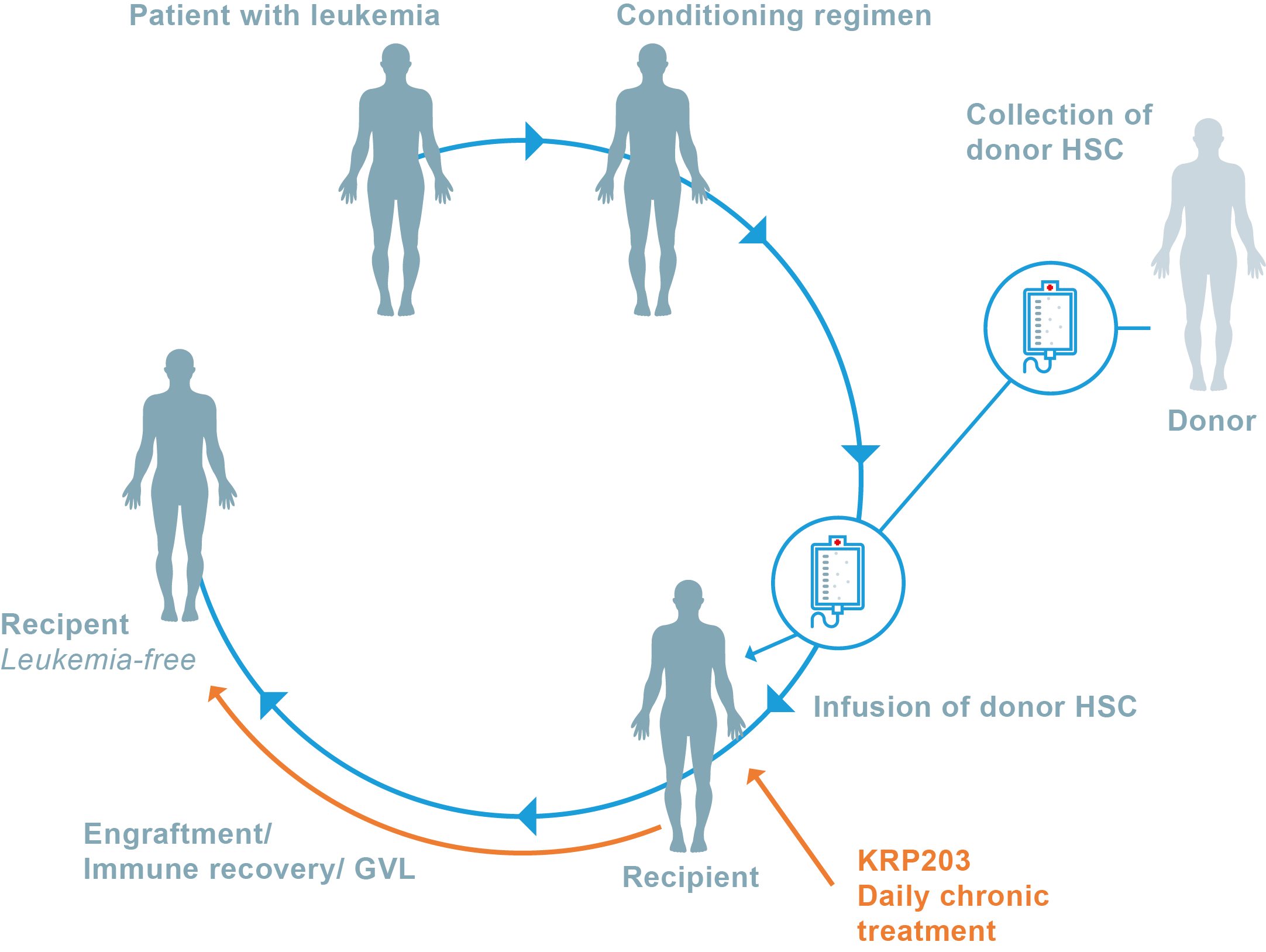Hematopoietic Cell Transplantation (HCT)
Mocravimod as an adjunctive immune therapy to allo-HCT
Allo-HCT provides donor stem cells that reach the bone marrow and thymus, engraft and repopulate a functional immune system. Mocravimod as an adjunctive immune therapy to allo-HCT sequesters alloreactive donor T cells in the recipient’s bone marrow, lymph nodes and other lymphoid organs.

The sequestration of alloreactive donor T-cells has two highly beneficial effects:
- Graft-versus-Host Disease (GvHD) is reduced as the alloreactive donor T cells do not migrate to peripheral tissues
- The retained alloreactive donor T-cells in the lymphoid organs, specifically the bone marrow, eliminate residual malignant leukemic cells that escape conditioning or chemotherapy.

A. No Treatment
Following allogeneic HCT, alloreactive donor T-cells migrate to secondary lymphoid organs, where they are activated and proliferate. Activated alloreactive donor T-cells are capable of killing leukemic cells through a process called graft-versus-leukemia (GvL). Alloreactive donor T-cells express S1PR1 on their surface. ,Signalling through this receptor regulates egress from secondary lymphoid organs to the peripheral tissues, such as the gut, skin, liver and lung. Through allo-recognition of their target tissue, donor T cells can cause inflammation and tissue damage resulting in graft-versus-host disease (GvHD).
B. Standard of Care 
Reduced GVHD at the expense of reduced GvL
Immunosuppressive drugs are used for the prevention and treatment of GvHD. However, T-cell suppression is non-specific and therefore the beneficial GvL reaction is also suppressed. Reduced GvL bears the risk of increased relapse and limits the successful outcome of allogeneic HCT. In conclusion, GvHD is suppressed at the expense of also suppressing GvL.
Suppression of all donor T cells:
 GvL
GvL
 GvHD
GvHD
C. Mocravimod 
Maintained GvL while reducing GVHD
Mocravimod, a pharmacological modulator of S1PR signaling, blocks the signal required by T-cells to migrate from the secondary lymphoid organs to the periphery, but does not suppress T cell function. Consequently, fewer alloreactive donor T cells migrate to peripheral tissues, resulting in reduced tissue damage and GvHD. The beneficial GvL effect, however, is maintained as the T cells remain functional, and thuscontinue to efficiently kill leukemic cells. In conclusion, GvL is maintained while GvHD is suppressed.
